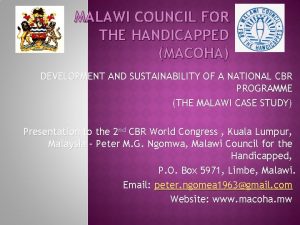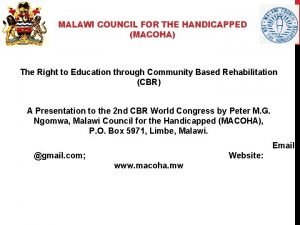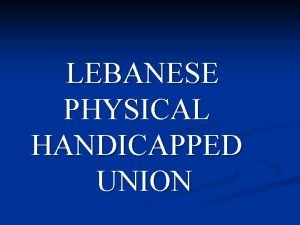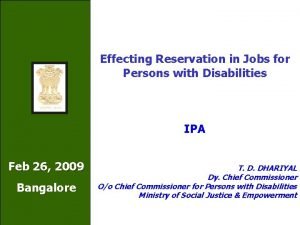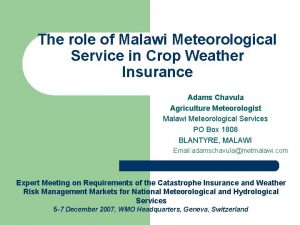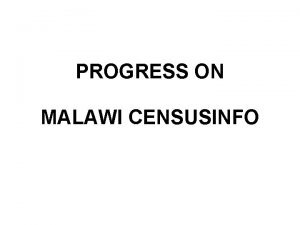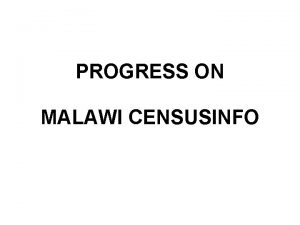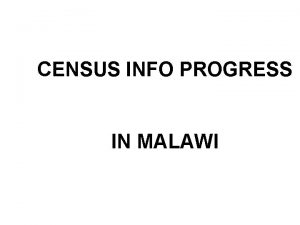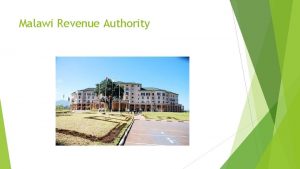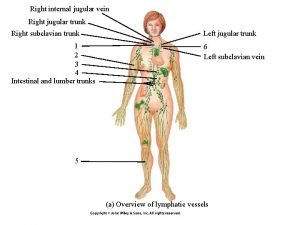MALAWI COUNCIL FOR THE HANDICAPPED MACOHA The Right

























- Slides: 25

MALAWI COUNCIL FOR THE HANDICAPPED (MACOHA) The Right to Education through Community Based Rehabilitation (CBR) A Presentation to the 2 nd CBR World Congress by Peter M. G. Ngomwa, Malawi Council for the Handicapped (MACOHA), P. O. Box 5971, Limbe, Malawi. Email: p @gmail. com; Website: www. macoha. mw

PRESENTATION OUTLINE Ø Background and Overview Ø Policy and Legal Framework Ø Challenges Ø Lessons Learnt Ø Recommendations Ø Conclusion

BACKGROUND AND OVERVIEW Ø Malawi is located in Southeast Africa. Ø It has an estimated population of 16 million people, as of July 2013, of which about 45% are under the age of 14. Ø It means that almost half of the Malawi population are children in need of education. Ø Malawi is one of the poorest countries with a Human Development Index of 170 out of 187 states in the world. Ø Over half of the population, that is 62%, live in abject poverty. Ø Due to poverty most people in Malawi cannot access social services that include education.

GEOGRAPHICAL POSITION OF MALAWI 4

DEMOGRAPHIC INFORMATION ITEM 5 Geographic Position South East Africa Surface Area 118, 484 sq. km Population Approx 16, 000 Disability Population 3. 8% (Approx. 500, 000) Per-capita Income US$ 318. 40 Urban/Rural Population 19. 8%/80. 2% Population Structure Life Expectancy 0 -14 = 45. 9% 65 and over=2. 7% 15 -64=52. 2% 56. 9 years Male/Female Ratio 49%/51% Literacy Rate 71%

BACKGROUND AND OVERVIEW CONT. Ø Most children with disabilities in Malawi are not in school and are neglected. Ø The one’s that try to enrol in school dropout or do not receive any beneficial education as the education system is not favourable and does not meet their needs. Ø Consequently, due to lack of education opportunities, persons with disabilities continue living in abject poverty and become passive recipients other than active contributors to the society. Ø Therefore, following the ratification of the United Nations Convention on the Rights of Persons with Disabilities (UNCRPD) this study sought to find how Article 24 of the Convention on the Rights of Persons with Disabilities could be implemented in Malawi with support from the Community-Based Rehabilitation (CBR) programme in light of the resource constraints and poverty that prevail in the country.

BACKGROUND AND OVERVIEW CONT. Ø The study targeted head teachers, classroom teachers, Primary School Advisors (PEAs) and the Directorate of Special Needs Education in the Ministry of Education. Ø It was intended to examine issues of enrolment, drop-out rate, level of awareness amongst teachers, learners including those with disabilities on the rights of children with disabilities in comparison to their non-disabled counterparts.

POLICY AND LEGAL FRAMEWORK Disability Act 2012 Ø The right to education for persons with disabilities in Malawi is recognised in the Disability Act (2012) based on equality and also makes provision for inclusive education. Ø It, therefore, calls for the Government to consider the requirements of persons with disabilities when coming up with ‘education policies and programmes. ’ Ø The Act also includes providing ‘assistive devices, teaching aids and learning support assistants’ to learners with disabilities. Ø Although this is so, the provision of financial support stipulated in Article 10 (3) of the Disability Act has not been extended to primary education where reasonable accommodation would be required to some learners with disabilities.

THE NATIONAL POLICY ON EQUALISATION OF OPPORTUNITIES FOR PERSONS WITH DISABILITIES (2006 Ø The National Policy on Equalization of Opportunities for Persons with Disabilities (2006) contains several policy priority statements that include removing of barriers and providing of information and education materials in accessible formats to learners with disabilities. Ø The policy has a goal of enhancing ‘access and inclusion of persons with disabilities in education. ’ Ø It is envisioned that this would be done by sensitising parents on the need to send their children with disabilities to school, reviewing of curriculum, introduction of appropriate communication methods e. g. sign language. Ø It includes designing and developing of suitable technologies, assistive devices, learning materials and individualised support according to individual learning requirements that are also indicated in the Disability Act. Ø However, the policy has no implementation action plan. Ø Otherwise, it would have guided various sectors that now have disability desk officers that were put in place following a directive from Office of the President and Cabinet in an effort to mainstream disability.

THE NATIONAL EDUCATION SECTOR PLAN (NESP) The plan highlights that: - Ø Learners with special educational needs should be allowed to do their school anywhere in the country. Ø Schools should provide teaching and learning resources for learners with diverse needs in their schools. Ø The Ministry of Education to ensure that school infrastructure is disability friendly. Ø Increase enrolment of teachers going to train in special needs education so as to support inclusive education in the mainstream and give the necessary cascading effect.

CHALLENGES Enrolment and Drop-out rate Direct comments from respondents: - Ø Disability learners are not well cared for, by both, parents, community and teachers. Ø Parents do not feel the importance of sending their learners to school. Some learners discriminate learners with disabilities. Ø Free Primary Education overwhelmed the system Ø Lack of Awareness on rights and needs of learners with disabilities Ø Training of Teachers through Open and Distance Learning (ODL) v Quality of education may be compromised since the training that is received might not be adequate for inclusive education. Ø Continuity with Special Needs Education

CHALLENGES CONT. Ø Lack of a conventional sign language. Ø Lack of collaboration amongst stakeholders. Ø Lack of house accommodation for teachers that demoralise them. Ø Abject poverty that makes children go to school hungry and in poor clothes. Ø On the other hand, in respect of teachers’ motivation, the Malawi Government started paying teachers ‘hardship’ allowance to motivate them, especially those in the rural areas. Ø Lack of awareness, monitoring and reinforcement of policies hence little happening in practice to achieve inclusion.

LESSONS LEARNT Ø The study established that CBR assisted in creation of awareness in the areas where it was being implemented unlike in the other areas where there was no CBR. Figure 1: Awareness on Needs and Rights of Children with Disabilities in Schools 9 8 7 6 Number of Respondents 5 4 3 2 1 0 CBR Non-CBR Awareness Done 9 Awareness Not Done 1 3 7

LESSONS LEARNT CONT. Ø As a result of changed attitudes after acquiring knowledge through awareness, schools were ready to make adaptations and CBR can easily create this for possible attitude change. Ø Adaptation of Learning Environment in Schools 9 8 7 6 5 Number of Respondents 4 3 2 1 0 CBR Non-CBR Yes 9 No No 5 1 5

Ø The CBR could strongly conduct adequate training for PEAs and Teachers. Ø Provision of adequate materials for children with disabilities then monitor them to give support. Ø Assistive devices

RECOMMENDATIONS Rationalising the Malawi CBR Programme to Support Inclusive Education Ø Collaboration amongst Government sectors, NGOs, DPOs and all disability stakeholders is vital if the right to education is to be achieved Ø National Consultative and Coordination Committee on Disability Issues (NACCODI) has to be reinstituted so as to coordinate all stakeholders at national level and influence appropriate disability laws and policies related to inclusive education. Ø It will also ensure that planners and policy makers collaborate and set standards that can be monitored to ensure compliance. Ø Management of the National CBR Programme should facilitate the formulation of policy and strategy on extension of CBR to the rest of the country so that other districts are not side-lined in the quest for effective inclusion of children with disabilities in education.

RECOMMENDATIONS CONT. Ø Lobbying for embodiment of CBR in law, for example, the Disability Act or Local Government Act to ensure that sectors are obliged to participate in its implementation decisively at all levels of the implementation structure. Ø CBR should be harmonised. Ø A national CBR Strategic Policy and Plan is required that guides international donor partners, Government sectors and all disability stakeholders on their roles in the implementation. Ø Such a policy and plan would avoid duplication, fragmentation and ensure prudence on financial resources. CBR Individualised Support to Children with Disabilities for Inclusion in Regular School Settings Ø Identification, assessment and referral of children with disabilities to appropriate service providers for early intervention to prepare them for school.

RECOMMENDATIONS CONT. Ø CBR should lobby to ensure representation of persons with disabilities in committees that deal with education issues at village, area, district and national level to ensure equal and adequate distribution of resources to schools Ø To be done in line with the needs identified within individuals, therefore, allowing provision of reasonable accommodation to facilitate inclusion of children with disabilities in the regular education system. United Nations Disability Convention, art 2 (c). Ø Monitoring of children with disabilities on how they are coping up in class and as to whether the support given is adequate is also an important aspect that CBR should do. Ø Extra support may be sourced from outside the community using the referral system. Ø A link between schools and the community should be established to make sure that learning is supported by parents through disability committees, parent support groups and parent-teachers associations.

RECOMMENDATIONS CONT. Ø CBR should also initiate the ‘child to child’ concept in the CBR programme so that children with disabilities are assisted by their peers, for example, in mobility and school work. CBR can assist in removal of barriers by Ø Schools becoming disability friendly in terms of structure such as construction of ramps. Ø School cultures/ethos changing and accommodating learners of diverse grounds such as those with disabilities. .

RECOMMENDATIONS CONT. Ø Lobbying Government to take responsibility on provision of specialised teaching resources for learners with disabilities in the schools Ø Assisting Government to cover the gap that is there by orienting mainstream teachers to give them basic skills so that they are able to assist all learners appropriately in regular schools since itinerant teachers are too few and do not cover the whole country. Ø Reporting violations through the Malawi Human Rights Commission (MHRC) would facilitate the amendments of laws and policies through Ministry of Justice and Constitutional Affairs and the Malawi Law Commission. Ø Empowering persons with disabilities through their DPOs to use the CBR structure for advocacy and lobbying for review of the Constitution and existing laws and policies related to the issue of inclusive education. CBR Guidelines Introductory Booklet , p 43.

RECOMMENDATIONS CONT. Ø The legal and policy framework on education in Malawi should be re-aligned with the international education norms, especially Article 24 of the UNCRPD and make the right to inclusive education obligatory and justiciable. Ø CBR should lobby for inclusion of persons with disabilities at village development committee, area development committees and district development committees and its various sub-committees. Ø Examples are the school committees and the education committee at district level, to ensure self-representation and articulation of needs and rights of persons with disabilities.

RECOMMENDATIONS CONT. CBR committees at various Local Government hierarchies should monitor inclusive education laws, policies and plans so that they are implemented at all levels. Participation in monitoring by Civil Society and DPOs is provided for by Article 33 (3) of the CRPD. NACCODI, once it is functional, to recommend to Government on reviewing of teacher training so as to be inclusive, to have adequate numbers of teachers, and to facilitate the speedy instituting of the national sign language.

CONCLUSION Ø It has been evident from the study results that the CBR areas perform better that the non-CBR ones in enhancing inclusion in schools. Ø The CBR areas have performed well in sensitisation on inclusive education and adaptation of schools. Ø Most teachers in CBR areas were aware on the rights and needs of children with disabilities, adaptation of the school learning environment and measures to take in order to give individual support to learners with disabilities as per provision of the UNCRPD. Ø It was also noted that respondents from the non-CBR districts recommended for separate schools for children with disabilities, that is, remove them from the inclusive education system. Ø Other respondents did not recommend primary school education for children with disabilities, but to establish vocational skills training centres. Ø However, acquisition of vocational skills cannot go well without education.

CONCLUSION CONT. Ø Therefore, CBR if reorganized can enhance collaboration amongst stakeholders or service providers to ensure that the needs of individual children are met. Ø CBR may not provide physical assistance as was requested by some respondents but can refer to other stakeholders to provide it. Ø For example, a child who needs to go to school (CBR Education Component) but has a mobility problem can be referred to a hospital (CBR Health Component) where he can acquire a mobility assistive device. Ø The CBR programme will also refer him to school where a CBR worker explains to the head-teacher and classroom teacher on the needs of that particular child to ensure that adequate support is provided.

Thank you
 Macoha
Macoha Macoha malawi
Macoha malawi Family time
Family time Right product right place right time right price
Right product right place right time right price Handicapped introduction
Handicapped introduction Lebanese physical handicapped union
Lebanese physical handicapped union Disabilities act of 1995
Disabilities act of 1995 The right man on the right place at the right time
The right man on the right place at the right time Malawi'''s pizza delivery
Malawi'''s pizza delivery Esap ethiopia
Esap ethiopia Mij fm radio frequency lilongwe
Mij fm radio frequency lilongwe Christian health association of malawi
Christian health association of malawi Lighthouse malawi
Lighthouse malawi Welke taal spreken ze in malawi
Welke taal spreken ze in malawi Mary's meals malawi
Mary's meals malawi Malawi meteorological services
Malawi meteorological services Get in the train
Get in the train Put your right foot in
Put your right foot in Left left right right go go go
Left left right right go go go Smärtskolan kunskap för livet
Smärtskolan kunskap för livet Bris för vuxna
Bris för vuxna Teckenspråk minoritetsspråk argument
Teckenspråk minoritetsspråk argument Trög för kemist
Trög för kemist Delegerande ledarskap
Delegerande ledarskap Ellika andolf
Ellika andolf Datorkunskap för nybörjare
Datorkunskap för nybörjare
